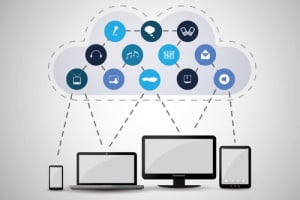
The cloud and a microservices architecture can help with data systems integration, but first an organizational change has to occur.
Today’s enterprises are pushed into rapid development due to fluctuations in consumer demand. In the age of instant gratification, and the focus on tooling products and services to match consumer preferences, the old-school enterprise IT infrastructure is “too rigid, too closed, and too cumbersome,” said Matt Ellis,Tibco’s senior product manager, during a recent webinar. Digital businesses must be flexible, adaptable, and scalable. The question is how.
Software as a service companies (SaaS) are creating solutions to each aspect of business operations. Enterprises that adopt various SaaS solutions are doing so in a piecemeal fashion. The sales department may be using Salesforce while the marketing department is deploying Adobe’s Experience Manager, and customer service is using Zendesk.
While each of these SaaS pieces function well for the stand-alone department using them, the data being collected is fragmented. Additionally, given the benefits of cloud computing, SaaS developers constantly update their software. This increases the demand on the business consumer’s IT department, which must respond to the updates quickly and efficiently.
Cloud computing is also forcing a change in IT infrastructure as data becomes distributed across different public and private networks. Mobile and other devices that are constantly connected to the Internet are additional input channels that need to be managed through rapid application development.
Consequently, an already fragmented back-end system continues to fragment and at a faster pace. This slows down the continuous development process required to maintain and improve end to end system requirements (e.g. infrastructure, internal employees, and consumers).
Hybrid integration platforms
Tibco hopes to meet meet these challenges by providing a set of solutions through its Integration Stack. However, there are fundamental shifts in three key areas that must occur before an enterprise successfully integrates its people, processes, APIs, and data systems (regardless of the software it chooses for this purpose). Tibco advises the following:
- Enact a change in the internal organizational culture by adopting a microservices approach helps solve the problem as these are smaller, more manageable services that help you to maintain continuous delivery, this is based on a DevOps culture/lifecycle project management and deployment approach .
- After the change is established, it’s time to tool the development, build, deploy, iterate and repeat.
- Establish a team-member structure that identifies the who, what, where, when, and how of integration specialists, application and departmental developers as well as the all-important digital citizen.
Integration patterns
- Identify your integration patterns: B2B, API, applications, processes, managed file transfer (MFT) protocols. This will help inform you as to the correct SaaS, PaaS, and IaaS for your organization.
Deployment models and end-points
- Determine your deployment models and how they will be folded into the integration. These will usually consist of three components: on-premise, cloud, and IoT devices.
- Define the data end points: on premise, the cloud, mobile device, or other IoT.
Moving to the cloud
The future is in the cloud. This is undeniable. Maintaining the hardware and software for IT infrastructure is time and money-intensive. Furthermore, legacy systems can no longer keep pace with constant consumer shifts. DevOps teams are also pushed to shorten their development and deployment lifecycle.
The first solution, according to Tibco, is to move IT infrastructure to the cloud where many of the essential IT tasks are automated. Not only is this a more cost-effective solution in terms of hardware, but it frees up the IT department to be more responsive to the rapid product development now required for DevOps teams. For each change in the product or service, there is an IT infrastructure response that supports that change. These changes can come from internal product development or when a SaaS vendor updates their software. Either way, a cloud-based infrastructure provides the solution on the IT end.
While implementing a microservices architecture improves continuous delivery (and solves the latency issues between demand and delivery of the product), data management, secure and reliable communication among services, building and maintaining complex integrations, while still adapting to shifts in the market, is still a concern.
Tibco’s solution is the BusinessWorks Container Edition, where microservices are managed through a single, visually integrated dashboard. Tibco has included the automation of common routines that help to simplify integrations tasks (e.g. communicating between services with messaging middleware using a drag- and- drop function). According to Tibco:
- New applications can be rapidly released
- New releases of prior applications will quickly meet the changing consumer demand
- External threats can be met with a swift response to mitigate a possible data breach situation
Finally, any SaaS, PaaS, or IaaS that a business chooses will need to be carefully integrated into the enterprise. This action will also require analysis and potential restructuring of the internal organization to better facilitate the near light speed shifts in data, varying input/output channels, and response time.





























